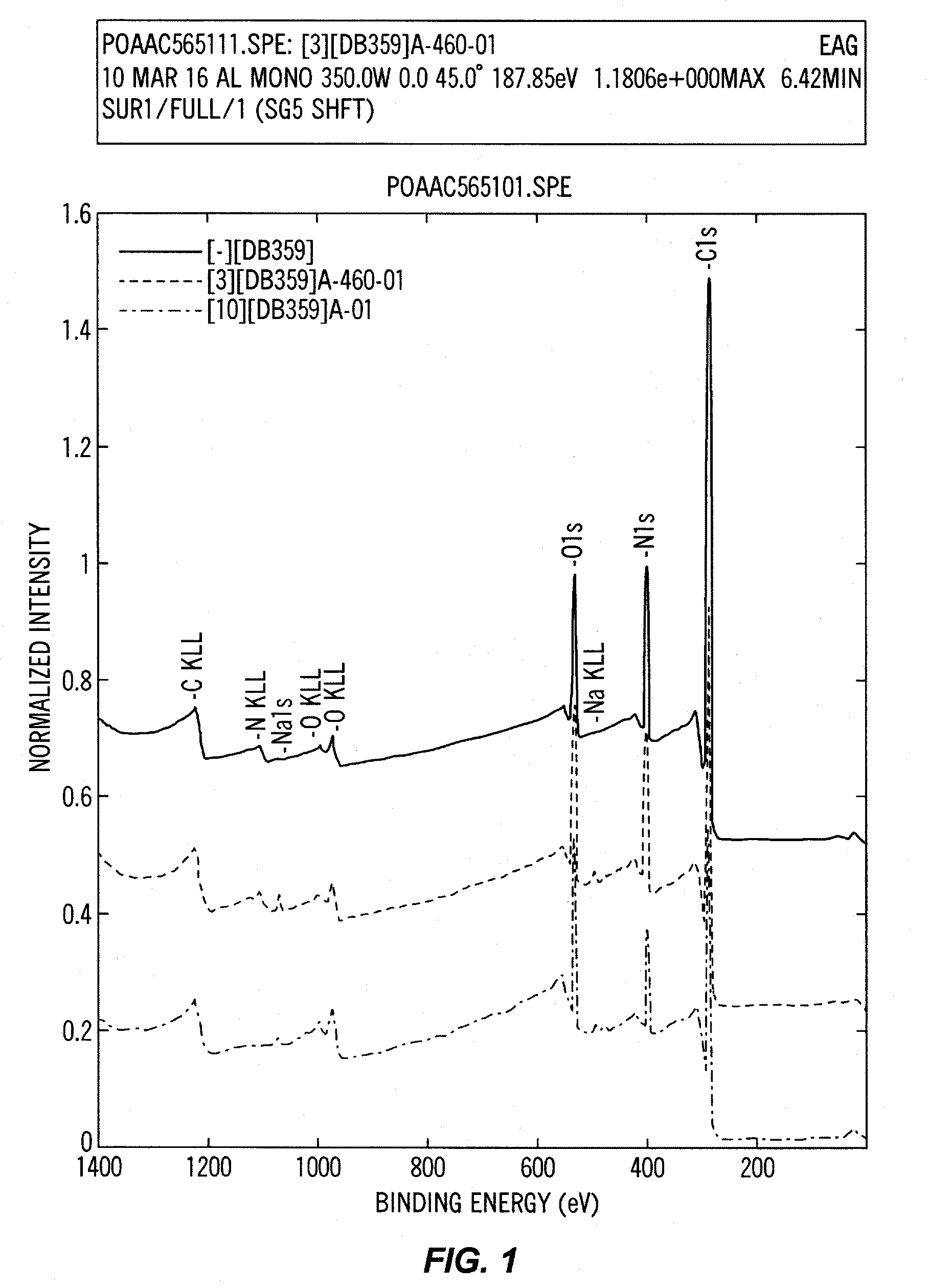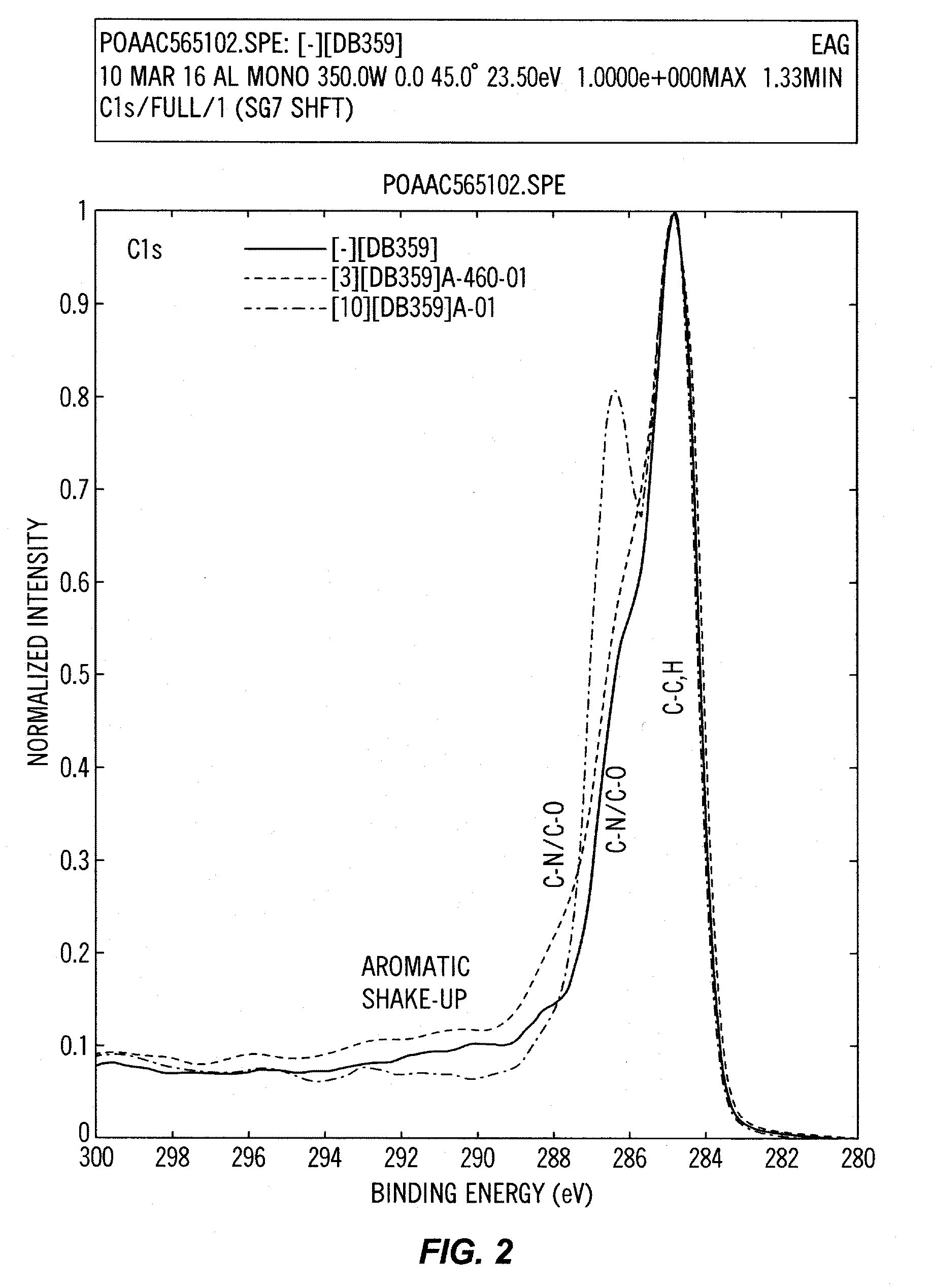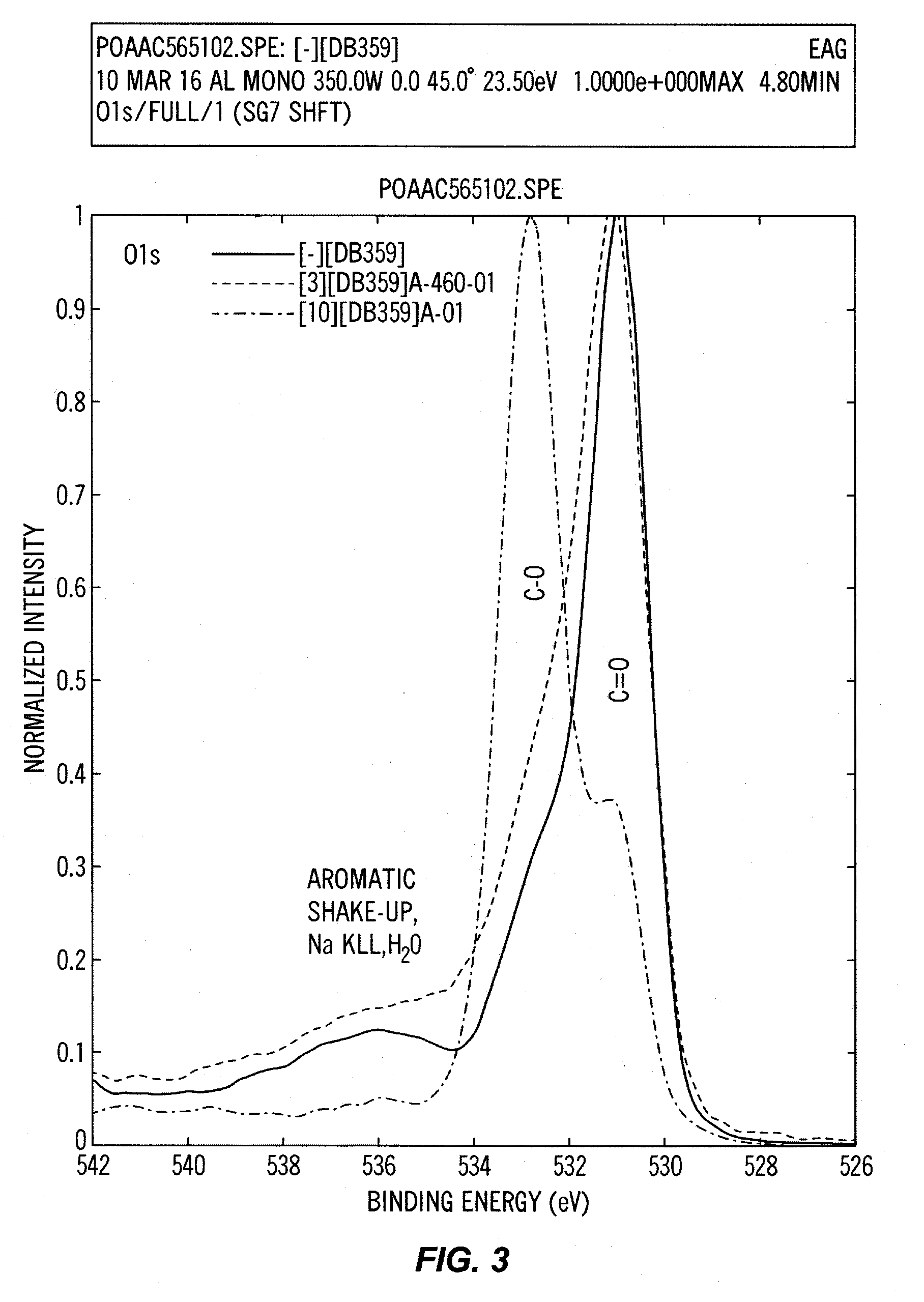Self-dispersing particles and methods for making and using the same
a technology of self-dispersing particles and dye particles, which is applied in the direction of iron organic compounds, group 5/15 element organic compounds, inks, etc., can solve the problems of limiting the use of dye particles and additives with sublimation properties, difficult to obtain good stability of dye particle-based inks, and difficult printing of dispersions
- Summary
- Abstract
- Description
- Claims
- Application Information
AI Technical Summary
Problems solved by technology
Method used
Image
Examples
example 1a
[0129]Example of preparation of a cyanuryl tris adduct with sulfanilic acid.
[0130]A solution of sulfanilic acid (114 g) in DI water (310 g), calcium-free sodium hydroxide (32 g) and sodium bicarbonate (55 g) at a pH of 8.5 was added to a stirred mixture of cyanuric chloride (40.2 g, available from Lonza Walkersville, Inc., Walkersville, Md.), ice (570 g) and DI water (480 g) in three stages controlling the temperature <0° C., <3° C. and <10° C., respectively. After the addition, the pH was 7.1 and the reaction mixture was heated to and held at 95-100° C. over 4.5 hours to get 1000 g of a clear liquid.
example 1b
[0131]Example of preparation of a cyanuryl tris adduct with 4-aminophenol.
[0132]A clear solution of a cyanuryl tris adduct with 4-aminophenol is prepared by substituting 4-aminophenol for 4-aminobenzoic acid in equivalent amount (72 g) in example 1a.
example 2
[0133]Example of preparation of a cyanuryl tris adduct with 4-aminobenzoic acid (“Tris 4-ABA”).
[0134]A solution of 4-aminobenzoic acid (90.1 g) in DI water (300 g), calcium-free sodium hydroxide (30 g) and sodium bicarbonate (55 g) at a pH of 7.2 were added to a stirred mixture of cyanuric chloride (40.2 g, available from Lonza Walkersville, Inc., Walkersville, Md.), ice (550 g) and DI water (500 g) in three stages controlling the temperature <0° C., <3° C. and <10° C., respectively. After the addition, the pH was 7.1 and the reaction mixture is heated to and held at 95-100° C. over 5 hours to get 600 g of a clear liquid.
PUM
| Property | Measurement | Unit |
|---|---|---|
| temperature | aaaaa | aaaaa |
| particle size | aaaaa | aaaaa |
| particle size | aaaaa | aaaaa |
Abstract
Description
Claims
Application Information
 Login to View More
Login to View More - R&D
- Intellectual Property
- Life Sciences
- Materials
- Tech Scout
- Unparalleled Data Quality
- Higher Quality Content
- 60% Fewer Hallucinations
Browse by: Latest US Patents, China's latest patents, Technical Efficacy Thesaurus, Application Domain, Technology Topic, Popular Technical Reports.
© 2025 PatSnap. All rights reserved.Legal|Privacy policy|Modern Slavery Act Transparency Statement|Sitemap|About US| Contact US: help@patsnap.com



